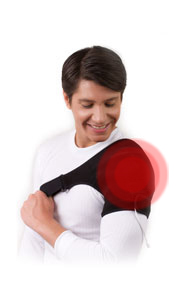Recognizing and Treating Shoulder Injuries
February 22, 2011 Leave a comment
During the summer season, there is an increase in the number of shoulder injury cases due to the many types of activities people engage in during this time. It’s the perfect season to go for a swim, play outdoor sports, hike and go mountain biking. The options are endless and there’s surely an exciting activity for every person.
A lot of people try to make the most out of the perfect, sunny weather. Although it’s a lot of fun, it posts a greater risk of injuring the shoulder blades and joints. Because of this, recognizing an injury and treating it properly is necessary to reduce the chances of needing invasive forms of shoulder pain relief now and in the future.
Shoulder injuries occur because the joints of the shoulders are part of practically all upper body motions. Hence, the main cause of shoulder problems is overuse and with that is a degree of micro trauma that may not be recognized right away. Although the damage may be small, it could accumulate so shoulder pain relief becomes necessary after some time. Continuous shoulder use during the painful stage may cause serious damage, turning the acute pain into chronic pain.
It is also possible for one strenuous incident to cause damage to the shoulder such as lifting something too heavy that may be compounded by poor lifting technique. It may not always be the intensity of the activity that cause shoulder pain but poor technique and execution. Hence, overuse and misuse of shoulder muscles may cause a person to look for shoulder pain relief because of the damage it causes.
1. The rotator cuff is one of the most commonly injured shoulder structures. It is comprised of four muscles that envelope the joint for shoulder stability. Injuries in these ligaments often come with partial and complete shoulder dislocation.
2. For acute injuries, rest the shoulder and avoid movements that increase the pain. Apply cold therapy for 20 minutes a couple of times for two days.
3. When the pain has subsided, slowly try to stretch the shoulder using the uninjured arm.
4. Once shoulder movement and motion is back to normal by 75 percent in all directions, begin performing simple and not so strenuous exercises to strengthen the injured muscles.
5. Try doing specific functional activities that are similar to the activities normally performed. Initially do it without nay resistance and as the muscles get stronger, add resistance little by little as well as increase the difficulty level of the activity.
6. Apply Heat Therapy. Heat Therapy is the most popular and effective way to treat these chronic pains. It is even better when using heat therapy with Far Infrared Rays. Far Infrared Rays are known for its deep penetrating heat into the body which targets the source of pain.
Like people always say, prevention is better than cure. Although it is important to know how to treat shoulder injuries, it is also essential to form habits that will prevent it from ever occurring.
